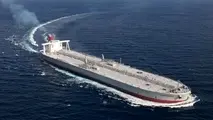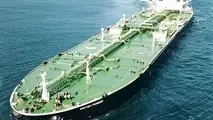Aframax Tankers and VLCCs Benefiting from North Sea Oil Projects

Owners of VLCCs and Aframaxes are benefiting from the revitalising of North Sea oil projects. In its latest weekly report, shipbroker Gibson said that “OPEC led production cuts have, at times, increased the appeal of North Sea grades to Asian consumers. Simultaneously, signs are beginning to emerge that the sector has put the worst of 2014’s oil price crash behind it and is proving more resilient in a new lower price environment. Due to the regions ageing infrastructure, high costs and declining production, some analysts have cast doubts over the long-term future of the North Sea”.
However, as Gibson noted, “the embattled region has adapted to lower oil prices and over the next few years, looks set to post increasing production numbers. New projects expected to come online within the next two years have the potential to add 1.2 million barrels/day of production, helping to offset declining output throughout the region. One of the largest projects undertaken, by Statoil, will begin producing 440,000 b/d in 2019 rising to 660,000 b/d by 2022. And in an example of reinvigorating older fields, BP has announced its Quad 204 project which aims to add 130,000 b/d of production alongside an expansion to their Clair Ridge field. These two projects are geared towards helping the company achieve its goal of doubling their UK production to above 200,000 b/d by 2020. Executives from both BP and Shell have recently expressed confidence in the future of the North Sea as both companies have worked hard to reduce costs, and in some instances sold off assets in the region. Shell has identified areas such as the Penguin cluster north of the Shetlands which could be given the green light for expansion along with several other areas over the next 18 months. One of the main reasons for a revitalisation in production has been the regions ability to cut costs in the face of declining oil prices. BP’s regional president for the North Sea recently stated their cost of production had fallen to $16-$17 per barrel from $30 in 2014. This is in line with estimates provided by MOL Group, an integrated oil and gas company, stating that on average the regions cost of production is $15 per barrel”.
The shipbroker added that “mergers and acquisitions have been on the increase in the region with Wood Mackenzie indicating that up to $15billion has been invested by international equity funds. In the first half of 2017, $6 billion worth of deals have been concluded, including Shell’s decision to sell around half of its UK production to a US based equity fund. And in a sign of further confidence in the region, Total’s recent deal to buy Maersk Oil, including North Sea assets, highlights that it is not only private equity funds with a taste for the North Sea, but oil majors too. Despite oil majors and private equity funds showing commitment and investing heavily in the region, doubts still remain over the long-term sustainability of production in the region. Research by Oil & Gas UK has highlighted that without sustained investment, as many as 80 fields could be shut by 2022. So far in 2017 only one new project has been sanctioned in addition to only one project in 2016. However, enough investment seems to have been placed to sustain and increase output over the next few years, providing an important source of Aframax demand in the region, and for long haul VLCC shipments to Asia”, Gibson concluded.
Meanwhile, in the crude tanker market this week, Gibson said that in the Middle East, “the dearth of VLCC enquiry over the week would normally impact on sentiment here, but as it stands Owners have had very little encouragement for some time and levels are already at rock bottom. Even with increases in bunker costs further hitting Owners returns there continues to be no escape route for Owners to go down and find some optimistic ray of light to hold on to. The over-abundance of tonnage will ensure levels for the foreseeable future will remain flat. Currently levels to the East are around 270,000mt x ws 40 for modern and voyages West hold at 280,000mt in the high teens. A fairly uneventful week for the Suezmax market. Even with the release of a busy first decade October Basrah programme rates have still remained static at 140,000mt by ws 27.5 for European destinations. Owners have had more success in improving rates for long voyages Eastbound with 130,000mt by ws 78.5 to Australia being achieved. AG/East Aframax rates have firmed throughout the week off the back of vastly improved Mediterranean and Far Eastern markets. AG/East has been fixed at ws 92.50, but with outstanding enquiry going into Monday, expect Owners to push for more next week”, the shipbroker concluded.


